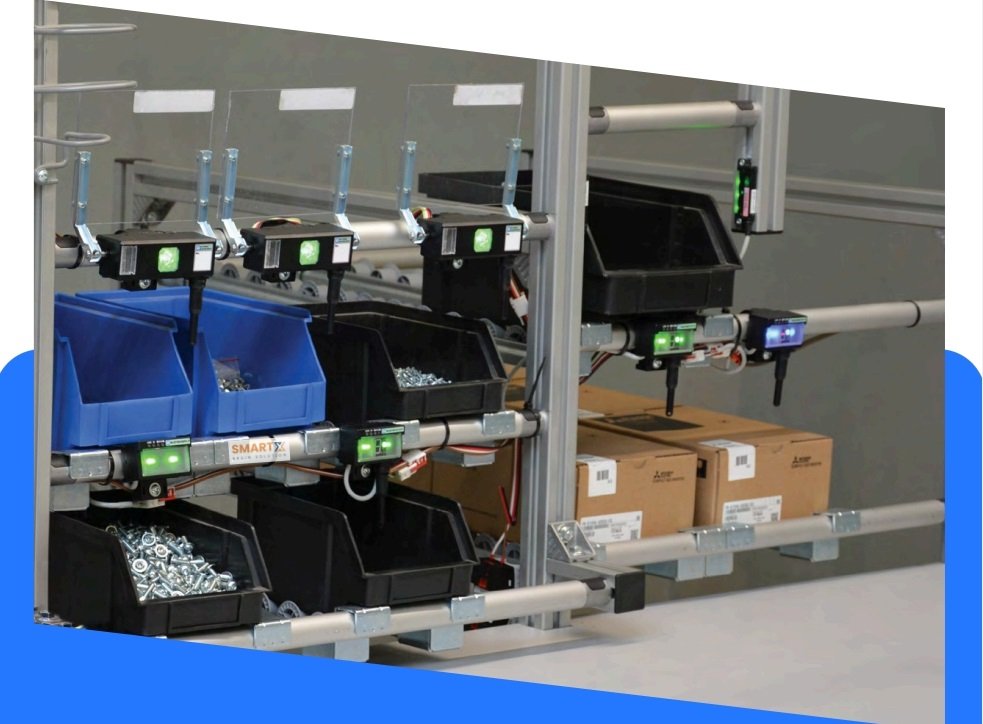When it comes to optimizing warehouse operations, pick-to-light systems are an excellent choice to enhance efficiency, reduce errors, and streamline order fulfillment. However, with so many different systems available, it’s essential to choose the right one for your business needs. The ideal pick-to-light system for your operations will depend on several factors, including your warehouse size, product types, and the technology you’re currently using. In this guide, we’ll break down the key considerations to help you make an informed decision on the most suitable pick-to-light solution for your warehouse.

Key Considerations for Choosing the RIght Pick-to-Light System
1. Warehouse Size and Layout
The first factor to consider when selecting a pick-to-light system is the size and layout of your warehouse. Larger warehouses with more complex layouts may require a more robust system capable of handling multiple zones, integrating with your warehouse management system (WMS), and providing visibility across different sections. Smaller warehouses might benefit from a simpler, more compact solution that can be installed without major system overhauls.
A pick-to-light system should be scalable to accommodate future growth in order volume and space. Some systems offer modular setups that allow for easy expansion, while others are designed for more specific configurations, so understanding your long-term needs is crucial.
2. Product Types and Order Volume
The types of products you handle and the volume of orders you process will heavily influence the type of pick-to-light system you should choose. For example:
- High-Volume, Fast-Moving Products: If your warehouse handles many fast-moving products (such as in e-commerce), you’ll need a system that can quickly process large quantities of items, possibly using multi-zone or multi-operator configurations.
- Low-Volume, High-Value Products: If you’re managing high-value or sensitive items, the pick-to-light system should be able to provide high precision and accuracy in its guidance and reporting. You may also need more advanced error-checking systems integrated.
The pick-to-light system must be able to handle both the volume and complexity of the products being picked while maintaining efficiency.
3. Integration with Existing Systems
Integration with your existing Warehouse Management System (WMS) is a key consideration. A good pick-to-light system should seamlessly integrate with your WMS to provide real-time inventory updates, track order progress, and send instructions to operators. Without smooth integration, the benefits of automation may be reduced, as data will need to be manually inputted or cross-referenced.
Check the compatibility of potential pick-to-light systems with your current technology stack, ensuring that both hardware and software will work together efficiently.
4.System Customization and Flexibility
Each warehouse is unique, and your pick-to-light system should be adaptable to meet your specific needs. Whether you need custom lighting configurations, additional features for multi-order picking, or options for different types of shelving and storage, the system should be flexible enough to accommodate your operations.
Look for systems that offer a range of customization options, including adjustable lighting, configurable displays, and scalability for future changes. The more adaptable the system, the better it will serve your warehouse in the long term.
5. User Interface and Training
A user-friendly interface is essential for ensuring that your workforce can easily adopt the new system without a steep learning curve. The system should provide clear, intuitive instructions for workers, allowing them to easily identify the correct items to pick, confirm actions, and move quickly through orders.
Training should be minimal for most systems, but it’s still important to evaluate the ease of training your staff will require. Systems with user-friendly software and interfaces typically require less time for employees to become proficient.
6. Costs vs. ROI
While investing in a pick-to-light system can be expensive upfront, the return on investment (ROI) should be considered when making your decision. Look at factors such as increased picking speed, accuracy, and reduced labor costs. A system that enhances efficiency and accuracy will provide long-term savings and pay for itself over time.
It’s important to evaluate not just the initial cost, but also the long-term value the system will bring to your operations. Consider the ROI by factoring in your order volume, labor cost reductions, and improved accuracy.
Conclusion
Choosing the right pick-to-light system requires careful evaluation of your warehouse needs, product types, current systems, and long-term goals. By considering factors such as warehouse size, integration capabilities, and product-specific requirements, you can ensure that your investment in pick-to-light technology will maximize efficiency, reduce errors, and boost overall warehouse performance.
Investing in the right pick-to-light solution will improve operational flow, reduce training time, and increase customer satisfaction, ultimately driving your business success in a competitive logistics landscape.

